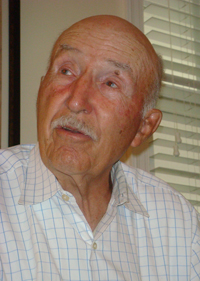For Ed Bearss, the past is prologue.
Recalling the National Park Service’s response to the war’s centennial, its former chief historian reflects on a new milestone.
What impact will the sesquicentennial have on battlefield parks?
In 1955, the Park Service director, Conrad L. Wirth, is thinking of a way to get federal support for the national parks, and he decides to link this idea to the 50th anniversary of the Park Service in 1966. He sells it to the Eisenhower administration as “Mission 66.” In 1958, Wirth has a meeting with the staff of the Civil War centennial and they decide to give priority to the Civil War parks, to have them up to standard by their 100th anniversary date. The marriage of the centennial and Mission 66 resulted in a big infusion of money.  And I don’t see that climate existing today because there are lots of other priorities.
And I don’t see that climate existing today because there are lots of other priorities.
What should the commemorations focus on?
The Park Service, reflecting the will of Congress and the people, is looking at the Civil War with a broader view. Most of the events in the centennial focused on the military, and they were probably not paying enough attention to what was going on in the general public with the civil rights movement. And now the Park Service has more sites to interpret, and they have to make them more inclusive.
Since the centennial, the Historic Preservation Act of 1966, and the creation of the American Battlefield Protection Program and the Civil War Preservation Trust have been positive for the parks. But the essential thing remains—the bucks are not there.
How have your own interpretations of the war evolved over the years?
Because of the association between the land and the events—speaking as a veteran who got shot [in World War II]—the land determines whether you live or die. In my day, the philosophy in the military parks was that people would not get out of their cars. But in recent years, a number of parks have been developing trails to get them out on the land. I used to give an eight-hour tour of the Wilderness and Spotsylvania. Now, I devote one day to the Wilderness and one day to Spotsylvania, because they keep developing the trails. People don’t really understand the land unless they walk it.
What can Civil War battlefields and parks do better to reach new audiences?
Since the parks are the land and the trails, the Park Service should devote more of its limited resources to tours. And make it interesting. Cover the causes and the results of the Civil War in your audiovisual program in the museum. But I don’t think you should deprive the visitor who wants to be out in the park.
Why do so many people remain fascinated by a conflict 150 years ago?
The Civil War is enduring, but intense interest in it is cyclic. Visitation to the Civil War parks with the centennial crested in about 1962. In 1982, I took a tour to Gettysburg. Heretofore on similar tours, the gender split was probably 75-25 [male-female]. But this day the whole group had changed—it’s half and half male-female, and the median age had dropped. All the visitors had a copy of The Killer Angels, just out in paperback. The greatest visitation to Civil War parks occurs in 1989 and 1990. In ’89, the movie Glory premiered, but the highest month will follow Ken Burns’ documentary. So the next surge may come from some great work of art.




